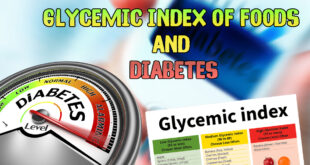- They are women from rural India who have adopted clean energy-based livelihood technologies to catalyse their businesses.
- From solar refrigerators to silk-reeling machines and biomass-based cold storage to bulk milk chillers, distributed renewable energy (DRE) is transforming women’s livelihoods at the grassroots.
- A recent Council on Energy, Environment and Water (CEEW) study has shown that out of the 13,000 early adopters of clean tech livelihood appliances, more than 80% are women.
- DRE-powered technologies provide an additional advantage to women farmers and microentrepreneurs by enhancing income opportunities through mechanisation.
- They also free women from several gender-assigned manual activities that are laborious.
- By 2030, India is expected to see 30 million women-owned micro, small and medium enterprises (MSMEs) employing around 150 million people.
- DRE livelihood technologies — a $50 billion market opportunity in India alone — have the potential to transform rural livelihoods, with women at the core of this transition.
- But how do we scale up this impact from thousands of women to millions of them? Here are key steps from reaching rural women as part of the Powering Livelihoods initiative.
- First, leverage the experience of early women adopters. Because of their novelty and high starting price, DRE appliances are perceived as high-risk purchases, especially by women users with a relatively lower risk appetite due to socio-economic reasons.
- To overcome the challenge, technology providers must leverage early users to share their experiences with potential customers, becoming demo champions/sales agents to market these products, based on their first-hand product experience and local credibility.
- For example, Kissan Dharmbir, an energy-efficient food processor manufacturer, engaged Neetu Tandan, an Agra-based micro-entrepreneur using the processor to produce fruit squashes and jams, as a demo champion. Her demonstrations are generating sales leads.
Importance of live events, financing
- Second, organise hyperlocal events and demos. People want to touch and see a high-tech, high-ticket-size product before believing in its ability and promised benefits, especially when it comes to women who historically have limited access to new information.
- These events also create spaces for women to network, become aware of the product and connect with people who can help them procure, finance and use these machines. At an event in Hamirpur, Uttar Pradesh, more than 200 women booked seven appliances on the spot, including solar sewing machines and multi-purpose food processors.
- Third, enable easy finance to purchase products. Limited avenues to avail financing for these clean technology products remain a bottleneck.
- Financiers supporting women farmers and microentrepreneurs should consider the technologies themselves as collaterals while easing the loan application process.
- For example, Samunnati Finance, a financier in the agri-value chain, availed an 80% first-loan default guarantee to support six women-led FPOs in Andhra Pradesh that purchased 100-kg solar dryers.
- Technology manufacturers and promoters should also ensure adequate after-sales services and buy-backs.
- To build financiers’ confidence, evidence on the economic viability of these technologies should be shared and promoters must offer partial default guarantees.
- Fourth, support backwards and forward market linkages. Only technology provision is not enough in all cases.
- Many rural products have larger market potential. Thus, finding and connecting producers to consumption hubs in urban areas are equally important to generate higher incomes.
- Women often struggle with established market linkages because of their limited mobility and networks outside their villages.
- Here, collectivising women or establishing business models that enable them to sell to an intermediary can ensure a regular revenue stream. Reshamsutra, a manufacturer of solar silk-reeling machines, is partnering with local procurement organisations to establish silk cocoon banks and equipment training for women reelers in Chhattisgarh.
Facilitate convergence
- Fifth, enable policy convergence. No private sector entity has the kind of reach and scale government institutions have, so leveraging their reach is imperative to exponentially scale up.
- Multiple Ministries are working towards promoting livelihoods for women — from State rural livelihood missions, horticulture and agriculture departments, Ministry of Micro, Small and Medium Enterprises, to the Ministry of Textiles.
- They should embrace clean energy solutions to further their respective programmes and outcomes.
- Much like it takes a village to raise a child, scaling the impact of clean energy solutions on women’s livelihoods needs a village of policymakers, investors, financiers, technology promoters and other ecosystem enablers.
- Only then can we truly unlock the potential of rural women and clean technologies simultaneously.
SOURCE: THE HINDU, THE ECONOMIC TIMES, PIB
 Chinmaya IAS Academy – Current Affairs Chinmaya IAS Academy – Current Affairs
Chinmaya IAS Academy – Current Affairs Chinmaya IAS Academy – Current Affairs



